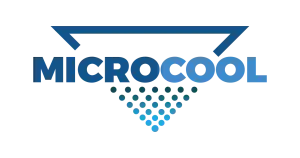MicroCool’s advanced fogging technology creates and maintains humidity to specified levels creating an optimal storage environment that decreases evaporation through wooden barrels. Our systems have been in use in Napa Valley for 15+ years. Vintners, brew masters and distillers count on our knowledge and state-of-the-art equipment to refine their alcoholic beverage storage process.
Why Growers Go with MicroCool
1 Equalize room humidity
MicroCool systems help equalize humidification levels between the inner and outer barrel which reduces vapor leakage (and product loss).
2 Reduce “Angel’s Share”
Wine producers can suffer up to 18% loss from each barrel, which increases the alcohol content beyond desired levels and results in lost revenue. Fog humidification lessens vapor losses and improves your bottom line.
3 Reduce topping off losses
Manually “topping off” barrels during storage and aging stages in order to maintain the fine balance of alcohol content and character is time consuming and expensive. MicroCool’s fog humidification can eliminate this manual process.
4 Eliminate daily adjustments
MicroCool’s fog system adjusts to subtle variations in room temperatures and humidity caused by fluctuations in weather conditions. Sensors monitor and maintain humidity to the set-point level, so that daily adjustments aren’t necessary.
5 Receive pristine fog that’s 99.5% bacteria free
We recommend and provide reverse osmosis equipment in conjunction with our systems as a 99% clean source of water to keep nozzles free and clear of minerals and barrels free of dust. The UV light in our pump system is the last stage of water purification killing 99.5% of waterborne bacteria.

MicroCool systems equalize humidification levels between the inner and outer barrel eliminating vapor leakage and product loss through the wood barrel. The integrated pump, high-pressure water nozzles and sensors work together to monitor and maintain humidity to specified levels.
Our team analyzes room dynamics including air exchange, temperature and existing equipment in order to specify a solution built for your exacting requirements.

MicroCool Fog Technology Advantages
- Mandate for continuous improvement
Results in superior fog technology not found anywhere else. - Clean and pure humidification
Reverse Osmosis and UV light provide 99.5% bacteria-free humidification. - Instant flash evaporation
Microscopic fog droplets create constant fog without dripping. - Custom design / simple installation
Every system is custom-built and can be installed in-house. - 360º “no tool” nozzles
Rotating nozzles allow accurate positioning. - Diverse pump output range
20+ models ensure a perfect fit for your specifications. - Energy efficiency
Eco-friendly energy and water conservation technology is built into every pump. - Low lifetime operating costs
Less water and energy consumption combined with minimal on-going maintenance adds up to lower overall costs than competing technologies.
Barrel Humidification
Wood vs. Relative Humidity
The relationship between wood and humidity is a rather complex one. Like many natural organic and fibrous materials, wood is hygroscopic. It readily absorbs water from and loses water to the surrounding air.
This exchange of moisture between wood and air is defined by three aspects:
- Relative humidity levels
- Ambient temperature
- Water content in wood
Moisture is absorbed from the air into the grain fibers in the wood. It can happen with any type of wood, including raw wood, treated wood, planks for wood floors, or finished wood furniture like a side table, shelf, chair, cabinets, and so on. It is especially true with wood barrels used to house and ship goods like wine, beer, whiskey, olive oil, and other products.
The vulnerability of wood to moisture-related changes will also depend on the individual species. For example, maple and cedar wood barrels can warp or shrink due to changes in atmospheric moisture levels.
Meanwhile, oak is highly resistant to change, which is one reason why it is a preferred option for wine barrels.
Impact of High Relative Humidity
In very humid conditions (relative humidity level above 70–80%), wood will absorb more water from the air and start to expand or swell. Prolonged exposure to humidity can permanently damage the wood.
High humidity also promotes the growth of mold and fungi. These organisms are generally bad news for any wooden items. Wood is biodegradable so the mold or mildew will eat away at the surface, causing rot to set in and increase health risks.
If you live in a warm tropical region with high humidity, you may need to invest in dehumidifiers for your expensive wood pieces or if you work in an industry that uses wood barrels for storage. The capacity of the equipment you need will depend on how much square footage the room has and other factors.
Impact of Low Relative Humidity
Extremes are bad news for wood when it comes to humidity levels. While the material may look completely dry to the naked eye, wood contains a healthy amount of water inside. At levels below 30% or 20%, the air may start absorbing moisture from the wood.
In a tree, nearly 50% of its mass is water. In a cut and dried piece of wood, this drops to anywhere between 6% and 15%, depending on the species and quality. At low humidity levels, the loss of moisture can make the wood crack, warp, and shrink.
This is why some people use expensive humidors as display cases in their cigar oasis or enterprise-grade humidifiers for their wine storage area. It is even more important to maintain proper humidity levels when you are producing and storing a product in wood barrels.
Humidity Control for Wood
Keeping humidity levels in the middle path, roughly between 40% and 60% of relative humidity, is often the best option to increase the longevity of wood furniture, and of course wood barrels.
If you are concerned about humidity levels in your environment, the first step is to get a hygrometer to keep track of them. If there is too much moisture, you may need a dehumidifier. In the US, however, many states experience dry and cold climates.
In these states, wooden humidifiers and humidification systems are frequently used during winter to keep the moisture levels from falling to catastrophically low levels. When it comes to humidification for wood barrels in a commercial operation, a cool mist humidifier from MicroCool is an excellent choice.
MicroCool for Industrial Humidification in Barrel Storage
Food and beverage storage is an exact science where each variable can have a major impact on the final product. Along with ambient temperature, relative humidity is also a factor to observe and adjust. With MicroCool fog humidification systems, you get dependable performance wherever you need it.
Speed and adaptability are crucial factors during winter. With sudden drops in temperatures and moisture levels, any wood item can suffer catastrophic damage. With advanced fog misters, you can quickly increase the ambient moisture levels and protect your wooden racks, barrels, and other equipment. You can make sure your product reaches your customer at its best.
MicroCool is an established name in the industrial humidification sector. In fact, our humidifier units have served Napa Valley wineries for over 40 years! To learn how you can benefit from using our products in your storage and barreling space for wine, beer, liquor, oil, or other product, give us a call at 1-800-322-4364 or reach out online.
Fog Humidification Resources
We invite you to watch a video on directed humidification, download documentation for review at your convenience or to contact us directly. We’re humidification experts first and salespeople second. Consider us a resource anytime you have questions.
Review this article originally published by Practical Winery & Vineyard. It outlines the result of an experiment designed to quantify differences in topping wine volume and costs between using chai and a cave.
Find out More about Greenhouse Cooling and Humidification



